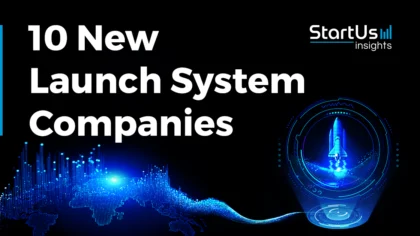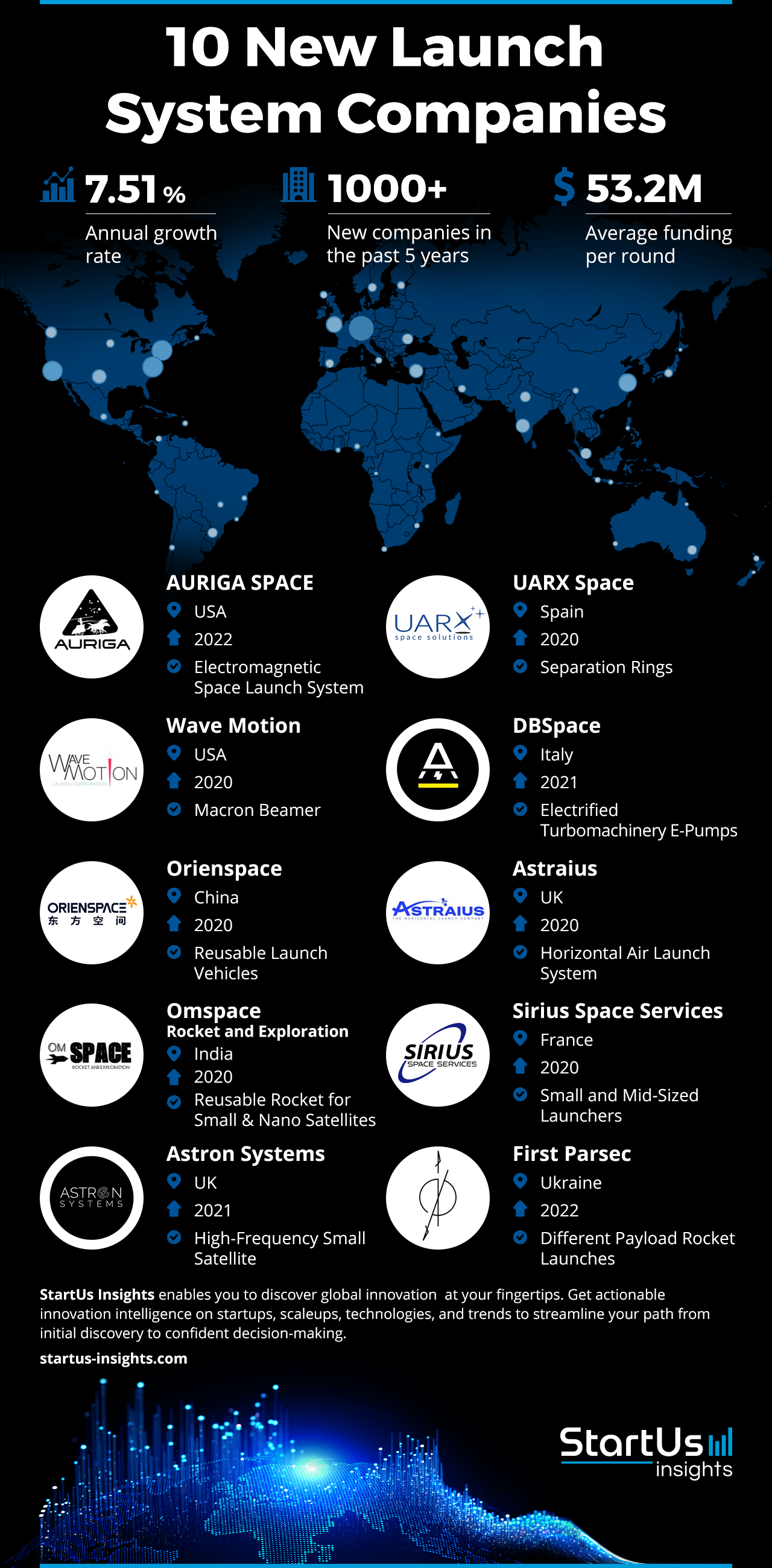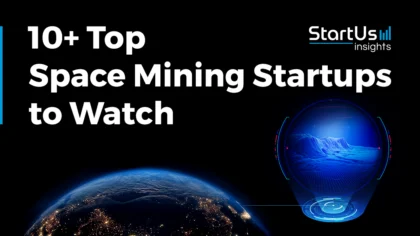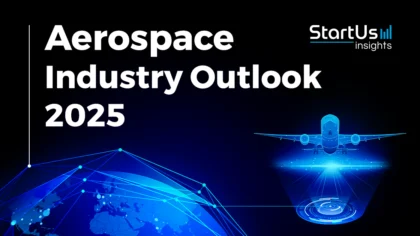Accelerate Productivity in 2025
Reignite Growth Despite the Global Slowdown
This article explores 10 new launch system companies offering technologies such as advanced electromagnetic launch systems and macron beamers. As the space economy experiences growth, launch systems propel this advancement. These companies develop operating reliable, cost-effective rockets that deliver satellites and payloads into the orbits.
Continue reading to gain up-to-date and data-driven insights on:
Key Takeaways
Drawing insights from the Big Data & AI-powered StartUs Insights Discovery Platform that provides data on over 4.7+ million emerging companies globally, we explore the evolving landscape of the launch system industry. This sector is marked by key trends and a substantial workforce, shaping its future. Here are some key insights at a glance:
- Current Launch System Trends: Some latest launch system trends include reusable launch vehicles, 3D printing, payload management systems, in-space launch platforms, and space debris management.
- Launch System Industry Statistics: The global launch system industry encompasses 5.1K+ organizations with an annual growth of 7.51%. It has seen the emergence of 1K+ new space launch system companies in the past five years and employs about 18 people on average. With 2020 as the average founding year, the 1K+ companies receive an average funding of 53.2M.
- 10 New Launch System Companies to Watch:
- AURIGA SPACE – Electromagnetic Space Launch System
- Wave Motion – Macron Beamer
- Orienspace – Reusable Launch Vehicles
- Omspace Rocket and Exploration – Reusable Rocket
- Astron Systems – High-Frequency Small Satellite
- UARX Space – Separation Rings
- DBSpace – Electrified Turbomachinery E-Pumps
- Astraius – Horizontal Air Launch System
- Sirius Space Services – Small and Mid-sized Launchers
- First Parsec – Cost-Effective Carrier Rockets
Explore 10 out of 1K+ New Launch System Companies
In this section, we explore the 10 top launch system companies enabling different launch capabilities for different payloads and the development of launch systems. These companies offer solutions such as separation rings, diversified payload rocket launches, reusable launch vehicles, & more. Read on to explore these emerging technologies and much more in detail! The last time we updated this report was 5 days ago. If there’s something missing or off, your tips are welcome!
Note on Signal Strength
One of the unique metrics we feature for each company is Signal Strength, a proprietary data point generated by our Discovery Platform. It gauges the extent to which a company’s influence has permeated the global ecosystem of startups, scaleups, and emerging companies. This proprietary metric serves as a valuable guidepost for understanding a company’s standing in the broader market landscape.
1. AURIGA SPACE
- Founding Year: 2022
- Employee Range: 2-10
- Location: USA
- Signal Strength: Very Strong
- What they do: AURIGA SPACE develops an electromagnetic space launch system. It utilizes electromagnetic levitation and propulsion techniques to eliminate the use of chemical propellants. This reduces environmental impact and enables clean space launches. The company’s system enables flexible launch scheduling and expands launch capacities while being more efficient and cost-effective than traditional rocket launches.
2. Wave Motion
- Founding Year: 2020
- Employee Range: 2-10
- Location: USA
- Signal Strength: Very Strong
- What they do: Wave Motion’s Jet Gun 2.0 launch system enables cost-effective space travel. Its macron beamer leverages a stream of hypervelocity dust particles instead of traditional gas for propulsion. The company also utilizes computational fluid dynamics (CFD) modeling to validate the payload acceleration capability and forecast system performance. This offers advantages like reduced size, weight, and launch costs compared to traditional launchers.
3. Orienspace
- Founding Year: 2020
- Employee Range: 51-100
- Location: China
- Signal Strength: Very Strong
- What they do: Orienspace creates reusable launch vehicles for low-earth orbit (LEO), sun-synchronous orbit (SSO), geostationary transfer orbit (GTO), and geostationary orbit (GEO). Its Gravity-1 is a three-and-a-half stage rocket that launches small satellites. Additionally, Gravity-2, a two-and-a-half stage rocket, offers cost-effective launch for medium and large-sized satellites. Gravity-3 is a three-stage rocket that supports a high payload capacity. With this Gravity series of rockets, the company provides flexible launch points and caters to companies launching large satellite constellations and exploring deep space.
4. Omspace Rocket and Exploration
- Founding Year: 2020
- Employee Range: 11-50
- Location: India
- Signal Strength: Very Strong
- What they do: Omspace Rocket and Exploration develops Infinity One, a reusable rocket for small and nanosatellite deployment at LEO. It combines liquid cryogenic engines, and nanoavionics, as well as a guidance, navigation, and control (GNC) system. The rocket also leverages advanced composite material structure and 3D-printed parts. These features enhance rocket performance and launch frequency while reducing costs.
5. Astron Systems
- Founding Year: 2021
- Employee Range: 2-10
- Location: UK
- Signal Strength: Strong
- What they do: Astron Systems provides reusable rockets for high-frequency small satellite launches. Its vehicle design minimizes environmental impact and achieves net-zero carbon emissions. The company, thus, launches the payloads focusing on affordable, responsive, and sustainable space access.
6. UARX Space
- Founding Year: 2020
- Employee Range: 11-50
- Location: Spain
- Signal Strength: Very Strong
- What they do: UARX Space develops the SAU&RON family of separation rings for small satellites deployed from launch vehicles. These rings feature an 8” or 15″ interface. These rings are lightweight and customizable, and allow for tailored separation velocity. Moreover, they provide up to 60 lines of harness between the launch vehicle side and payload. Thus, these rings enable customized velocity for separation for payload deployment at LEO and other interplanetary missions.
7. DBSpace
- Founding Year: 2021
- Employee Range: 2-10
- Location: Italy
- Signal Strength: Very Strong
- What they do: DBSpace develops high-speed electrified turbomachinery e-pumps for space liquid propulsion. These e-pumps provide better operability, lower operational and development costs with flexibility in designs. The company integrates additive manufacturing and advanced design processes to develop these pumps for enabling a shorter and cost-effective hardware development. These solutions assist launch vehicle, rocket, and spacecraft engine manufacturers.
8. Astraius
- Founding Year: 2020
- Employee Range: 11-50
- Location: UK
- Signal Strength: Very Strong
- What they do: Astraius makes an air launch system. The company uses the Boeing C-17 Globemaster to take small satellites to altitudes that avoid atmospheric effects. the desired trajectory. The C-17 Globemaster releases the satellites which then stabilizes with retardation and stabilization chutes. The rocket engine fires while locking the trajectory and the gyros auto-stabilizes the fired satellite to leave for LEO or SSO. This horizontal launch ensures safe payload delivery.
9. Sirius Space Services
- Founding Year: 2020
- Employee Range: 11-50
- Location: France
- Signal Strength: Very Strong
- What they do: Sirius Space Services provides a Sirius range of launchers for small and mid-sized satellites. Its STAR-1 engine that powers the launchers consists of a copper alloy combustion chamber and a nickel-based superalloy injection head. The company utilizes a laser powder bed fusion (L-PBF) process to produce the engine. The engine also includes a nozzle extension for the 1st and the 2nd stages. Additionally, it is produced majorly from metal additive manufacturing and uses liquid oxygen or liquid methane (LOx/LCH4) propellants to improve its environmental footprint. This approach allows them to offer flexible launch solutions while ensuring high fill rates and cost efficiency.
10. First Parsec
- Founding Year: 2022
- Employee Range: 11-50
- Location: Ukraine
- Signal Strength: Medium
- What they do: First Parsec uses 3D printing and hybrid manufacturing to develop small and medium-sized reusable rockets that transport by sea containers. Its Cutecumber series rockets include Cutecumber 9 and Cutecumber 9H to deliver 1 ton and 4 tons respectively to LEO. Additionally, the company’s Nutshell cargo ship transports payloads beyond LEO. The company also makes the Fire Ginger engine which is an open-circle methalox engine that reduces carbon dioxide emissions. These launch vehicles cater to missions with different payload capacities and target orbits while reducing the cost of launching carrier rockets.
Quick Tip to Find New Launch System Companies
Utilizing a SaaS platform like the Discovery Platform for identifying new launch system companies provides significant benefits compared to traditional scouting methods:
- Streamlined Efficiency: The Discovery Platform offers advanced tools that streamline the scouting process. It replaces hours of your conventional desk research, saving time and resources in identifying space launch system innovations.
- Access to Real-time Insights: Stay ahead of the curve with the most current insights into the ever-evolving space launch system industry. Stay up-to-date with the latest information on emerging companies designing launch systems news, so you can make quick and well-informed decisions.
- Tailored Exploration: Fine-tune your search to target specific areas of interest within the space launch system industry, like smaller launchers, horizontal air launch systems, or reusable rockets for small and nano satellites. The platform’s wide range of filtering options enables you to focus your scouting efforts with precision, guaranteeing that you discover the most pertinent and innovative companies in the field.
Ready to Explore All New Launch System Companies?
We’ve explored the dynamic landscape of the launch system industry, examining the latest trends and spotlighting exceptional companies driving innovation. To dive deeper, download our free SpaceTech Report or schedule a demo of the Discovery Platform for a customized exploration of these groundbreaking developments. Interested in enhancing our coverage of startups and tech? We value insights from experts like you – reach out!





